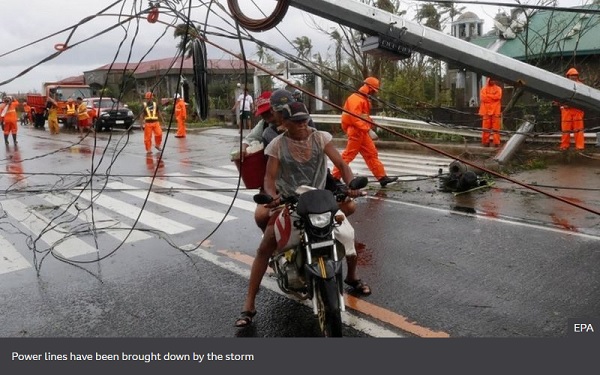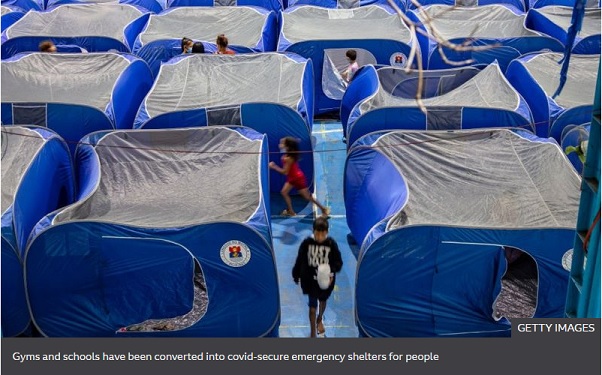
Typhoon Goni is barrelling across the Philippines, bringing with it "catastrophic" winds and rain.
At least 10 people have died amid reports of storm surges, flash floods, power outages and blown-off roofs.
Goni made landfall as a super typhoon at Catanduanes island on Sunday at 04:50 local time (19:50 GMT Saturday) packing winds of 225km/h (140mph).
It has since weakened, but is still wreaking damage across the main Luzon island, home to the capital Manila.
President Rodrigo Duterte is monitoring the disaster response from his home in Davao city, a presidential spokesman said.
Mark Timbal of the Philippines' national disaster agency said that 19 million people may have been affected by the path of Goni. "This 19 million already includes the populations in danger zones for landslides, flooding, storm surges and even a lava flow," he told the BBC.

Goni - known as Rolly in the Philippines - is the most powerful storm to hit the country since Typhoon Haiyan killed more than 6,000 people in 2013.

The Philippines is used to powerful storms - it is hit by an average of 20 storms and typhoons a year and lost 22 people when Typhoon Molave barrelled through the same region last week.
But this year preparations have been complicated by the Covid-19 virus, which has already caused 380,739 infections and led to 7,221 deaths in the Philippines.
Some 347,000 people were evacuated, civil defence chief Ricardo Jalad said - revising down the one million figure he mentioned ahead of the storm.

